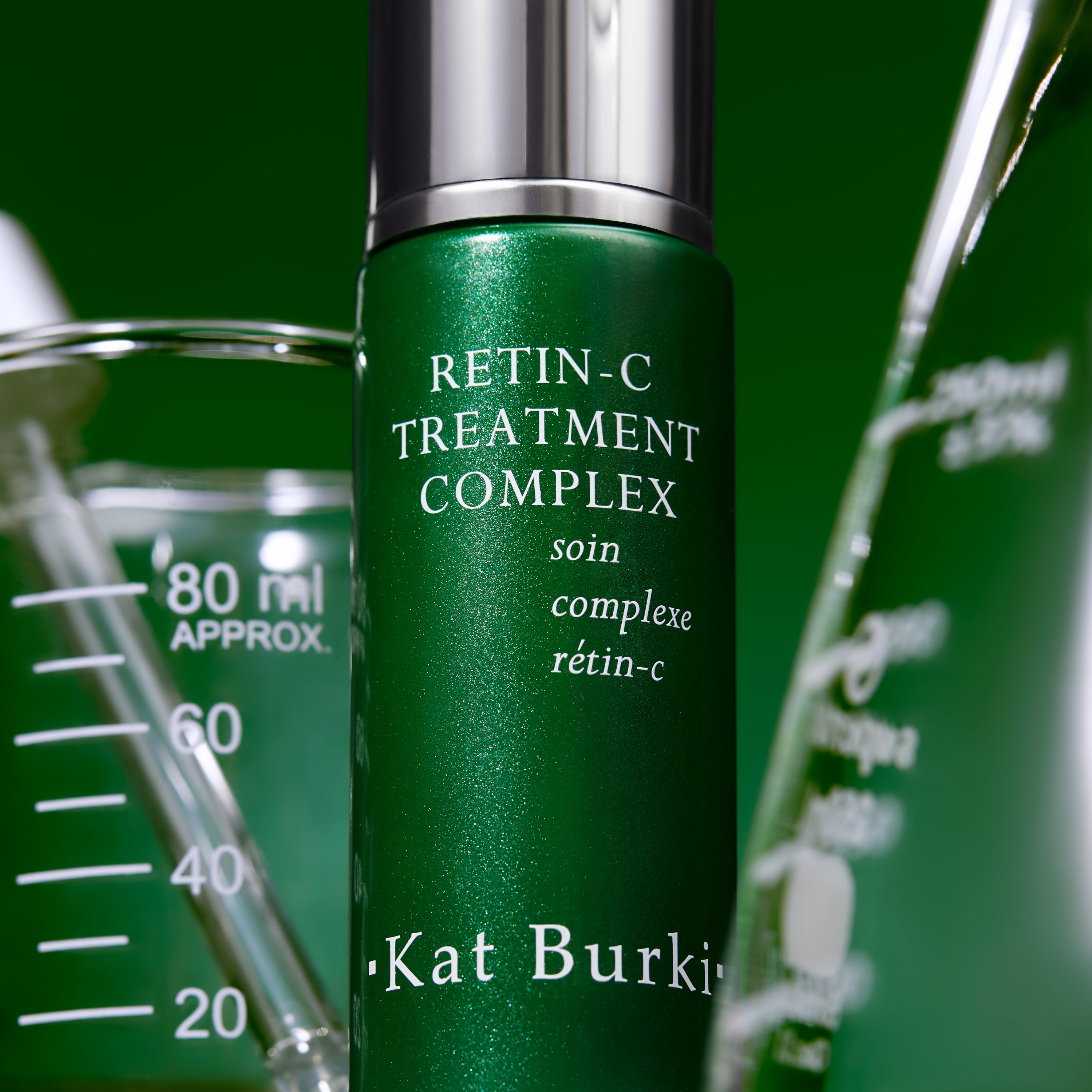Widely hailed as the holy grail of skincare ingredients by dermatologists and skincare experts, retinol is a hero ingredient that can do it all and is very much here to stay.
Part of the retinoid family, the multiple benefits of retinol are uncontested and include reducing the appearance of fine lines and wrinkles; improving skin tone and texture; minimizing the appearance of pores and preventing, as well as treating, acne. But retinol side effects, such as redness, irritation, and flaking, often make it unsuitable for those with dry and sensitive skin. Enter phyto-retinols, a group of plant-based ingredients that have retinol-like activity but without the irritating side effects.
What are retinoids, you ask? Let’s go back to the basics.
What are retinoids?
Retinoids are vitamin A derivatives commonly used in skincare to improve the texture and appearance of the skin. Applied topically they have been found to speed up the turnover of surface skin cells and boost collagen, which in turn improves skin tone and reduces fine lines and wrinkles. The first retinoid to make waves in skincare was tretinoin (also known as Retin-A), a prescribed medication used to treat acne, but it was later found to promote cell turnover and fade pigmentation. The active in retinoids is retinoic acid, which is what tretinoin is composed of, so it works faster and is more powerful, and also more irritating, than other forms, including its more popular cousin, and the one you will have probably most heard of, retinol.
What is Retinol?
Retinol is a milder form of vitamin A that our skin must first convert into retinoic acid, so it takes slightly longer to work and is less irritating. Also part of the retinoid family, retinol encourages cell turnover in the skin and boosts collagen production, which can improve the appearance of fine lines and wrinkles and improve both skin texture and tone. Unlike Retin-A, which requires a prescription, retinol is available over the counter and used in a multitude of skincare formulations in varying concentrations.
How to use Retinol
Those using retinol for the first time should start with the lowest concentration (0.25 percent), twice a week, slowly building up to regular use. Concentrations of even 0.1 percent have been found to prove effective, so there’s no need to go above what your skin can tolerate, as consistency is more important than quantity.
If you’re wondering how to use retinol in a way that will counteract irritation, try to ‘sandwich’ it. Retinol sandwiching is a method that involves applying retinol in between two layers of moisturizer in order to slow down its absorption into the skin, thereby lessening adverse side effects.
Retinol should be used as part of your night time routine and, as it can make skin thinner and increase photosensitivity, always followed with sunscreen during the day. As with all actives, it’s best not to mix retinol with other ingredients like AHAs and BHAs, as this can lead to more dryness and irritation. Retinols can be used in conjunction with hydrating and moisturizing ingredients like squalane, hyaluronic acid, and ceramides.
What are Phyto-Retinols?
You may have heard this new buzzy word referring to the gentler, vegan retinol alternatives now available. Phyto-Retinol is an umbrella term for plant-based ingredients that have retinol-like activity but are not part of the retinoid family. These ingredients include sea fennel extract, rosehip seed oil, picão preto and, perhaps the most well known phyto-retinol, bakuchiol.
Sea fennel extract is high in naturally occurring vitamin A and peptides, which aid in reducing acne and redness. Rosehip seed oil is loaded with carotenoids, which aid in promoting cellular turnover. Picão Preto is packed with naturally occurring hyaluronic acid and peptides, which aid in the reduction of fine lines and wrinkles.
Bakuchiol vs Retinol
The most famous of the phyto-retinols, bakuchiol, which is derived from the seeds of the babchi plant, is a gentler, plant-based alternative to retinol that offers the same results: it reduces the appearance of fine lines and wrinkles and improves uneven skin tone, all with a lower risk of skin irritation and redness. Like retinol, bakuchiol also encourages cell turnover and stimulates collagen production in the skin, in addition to having antioxidant and anti-inflammatory properties.
How to use Phyto-Retinols
Because phyto-retinols are derived from plants and much more gentle on the skin, a slow introduction is not necessary for these products. Phyto-retinols also do not increase photosensitivity, so they can be used day and night. But, as we all know, that doesn’t mean you can skip the sunscreen.
Phyto-retinols can be paired with other hydrating and moisturizing ingredients but avoid AHAs such as glycolic acid, which has been found to degrade bakuchiol's formulation.
Here, some of our favorite retinol and phyto-retinol picks.
Retinol
Kat Burki Retin C Treatment Complex Serum
Phyo-Retinol
Furtuna Skin Fior di Luna Nightly Renewal Cream
Emma Lewisham Supernatural Triple Vitamin A+ Face Oil
VENN Skincare Collagen Intensive Phyto-Retinol Resurfacing Mask
